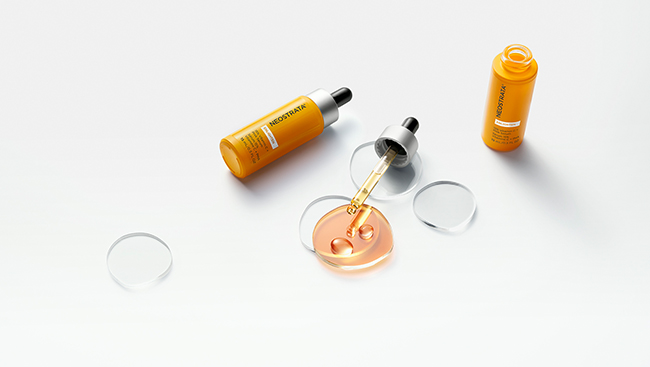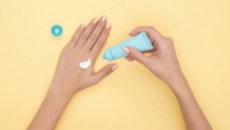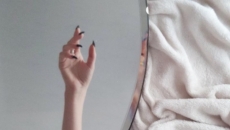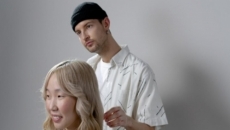When it comes to looking older as we age, most people focus on wrinkles as the most obvious sign and, perhaps, something to minimize. Yet an uneven skin tone, speckled with dark spots, can be just as aging though it’s not always an indication of an older complexion but of years of unprotected sun exposure.
Skin discoloration, or hyperpigmentation, is caused by several factors but there are three common types that people experience, says Dr. Albert Lamprecht, owner of White Rock Skin & Laser Clinic, a medical esthetic practice (https://www.whiterockskinandlaser.ca/).
The first most common type is the aforementioned age spots or sun spots, which, Lamprecht says, are likely found on sun exposed areas like the face, limbs, and hands. They’re often small and well defined.

The second type is called post Inflammatory hyperpigmentation, or PIH, that can be found anywhere on the skin and is usually a result of a skin injury such as a scratch, a burn, or acne.
“As the skin heals it develops a darker pigmentation,” he explains. “You can also see it after people have had bad skin infections, or even chronic eczema, or psoriasis. Anything where there is a pre-existing skin injury or lesion or infection that as it heals it takes on a permanent dark pigmentation. So that’s quite common.”
The third one is called melasma, traditionally affecting mainly women, which is an accumulation of melanin. Lamprecht says it’s most seen during pregnancy and post-partum. “The classic areas would be the face—people refer to it as the pregnancy mask— and we see it on the abdomen, the midline of the abdomen,” he says.
Lamprecht says that though hyperpigmentation affects all skin types and tones, it’s more likely to affect people with darker skin tones, especially the post inflammatory type.
Treatments for hyperpigmentation range from skin care brand regimens to doctor-prescribed creams to therapies using energy-based devices.

Patricia Clare, national training manager for Neostrata, says the brand’s approach to discoloration is three-pronged—combat, renew and target—to treat hyperpigmentation on all levels.
“We want to combat that UVA/UVB external stress on the skin for sure as well as oxidated stress, pollution, etc., but then we want to renew it by being able to turn over those dead surface cells. Now we can really get down and target the melanin production and transfer,” Clare explains.
Combat, she says, means religiously using an SPF. “If someone comes to me about dark spots, the first conversation we have to have with them is sun protection…I’m going to make sure they understand the importance of them wearing an SPF every day that they walk the earth,” Clare says.
Using at least a 30 SPF daily, Lamprecht advises, is imperative to limiting further damage and not undoing the any treatment benefits.
For Clare, after the sun protection, the next step is using a brightening cleanser to exfoliate the skin for cell renewal. “It’s got neoglucosamine which is one of our signature ingredients. I call it the all-inclusive ingredient because not only does it help to turn over all those dead cells, but it is also phenomenal for alleviating discoloration,” she explains. And it’s safe for all skin tones.

The “target” part of the approach a a 15 per cent Vitamin C and PHA serum which also includes feverfew and turmeric extracts.
For Lamprecht, his clinical approach for treating discoloration “goes from least invasive to most invasive. It very much depends on A) the severity of the condition; B) the patient’s results having just started with topical agents for a few months; and thirdly, just the patient’s wishes.”
Once he rules out any underlying medical condition for the hyperpigmentation, Lamprecht proscribes a topical cream treatment of which there are two that can diminish the spots. Hydroquinone, a commonly proscribed topical, reduces the accumulation of melanin, the pigment, in that area. Lamprecht says it works slowly, sometimes taking months and the results can vary.
Next would be a retinol-type product. Retinols, he says, are often used to treat both acne and hyperpigmentation.
Though some practitioners offer chemical peel treatments as an option which Lamprecht says can be effective, he doesn’t incorporate them in his hyperpigmentation care.
The next option would be energy-based treatments, either laser therapy or intense light pulse (IPL). For tanned or darker skin tones, IPL is the most effective and safest method.
“We tend to find that fraxel lasers … can be very tricky and can contribute to hyperpigmentation as opposed to IPL that doesn’t have that same risk.” Lamprecht says. “We usually tell people that they shouldn’t come for laser if they have a tan. The whole idea of lasers is that they’re meant to pick up on areas of darker pigment. Whereas if you have a background of brown or perhaps a darker brown area, the laser will have a hard time distinguishing what is the actual hyperpigmented area.”
Lamprecht adds that leaving it too long to seek treatment can lead to underwhelming results.
“Seek medical or esthetic assistance when you do identify that you’re developing things like that. The sooner you intervene, the better your results will be.”
And with the sun damage being the No. 1 cause of discoloration, using an SPF daily makes prevention simple.






